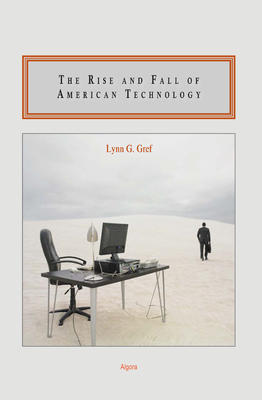While things have been very favorable for my position in Starpharma (153% gain as of today), the stock seems to be at a crucial testing point.

Starpharma Holdings (SPHRY.PK) recently reached a new 52 week high of $14.71 and the quote about hindsight vision always being 20/20 hits a sore spot for me.
If I had a time machine, I would have definitely purchased more than 13 shares of SPHRY at $4.79 instead of small, speculative bets on companies like:
Conolog Corporation (CNLG.PK): A $20 bet gone sour with a delisting and subsequent price drop/new pinksheet status.
Sunesis Pharmaceuticals (SNSS): A $40 bet tarnished by a 1 for 6 reverse stock split to avoid delisting (to be fair this company isn't a complete failure yet but more like a "Thomas the choo-choo train" pharma company that still has some potential).
Targeted Genetics (now Ampliphi Biosciences, APHB.PK): A $40 bet turned mysteriously uncertain with TGEN's acquisition of London's Biocontrol Limited, a new ticker symbol, and a new focus on developing anti-bacterial solutions using bacteriophages (bacteria killing viruses that can spare "good bacteria") to combat several difficult-to-treat bacterial infections with potentially lucrative market share potentials.
Now while small and large investors alike may regret not buying more of company X or company Y, it is important to remember that small gains are always better than big losses. This especially rings true for chump investors like me who won't invest more than 1k during the lengthy learning period.
Nonetheless, Starpharma's continued rise is peculiar/questionable in three regards:
1) There's lots of speculation with little news or exposure.
Unlike more well-known public companies, Starpharma's pink sheet and ADR status gives the company much less exposure than companies on the more visible and active stock exchanges. Additionally, institutional investors, market makers, and big bulls on Wall Street aren't as willing to take on an investment in a company the likes of Starpharma, especially when SPHRY was in the $4-6 range.
However, such big dogs might be more willing to take on an investment like SPHRY given how fast the stock has risen and the fact that it is now in the more acceptable range of $10 and up (which is frequently more palatable for large investors).
While such gains and volume are usually accompanied by big news or milestone accomplishments, SPHRY's rise in price and volume has been marked by relative silence. This oddity even prompted the Australian Stock Exchange to inquire if the company ought to take the required actions to address these events (with Starpharma replying that no actions are necessary).
Nonetheless, the company's Vivagel development along with promising subsidiary developments like those mentioned in my 9/12/10 post seem to be the main generator of "word of mouth" buy recommendations.
2) Starpharma has a very uncertain maximum price target.
Nobody really knows just how high this stock can go, which makes it considerably speculative in multiple ways.
Consider if a longer-term target high is say, $25. This leaves open the possibility of purchasing shares in the $7-13 range given a correction occurs. While this isn't as good as buying the stock at $4, the very long term investor still has the chance to correct any 20/20 hindsight vision by increasing their position at a reasonable price.
On the other hand, if Starpharma engages in a slow but continuous upward trend and eventually becomes an emerging, stellar Nanotech/Biotech firm (as author Lynn Gref suggests in "The Rise and Fall of American Technology") it is possible to miss the boat entirely by not getting in now.
3) Starpharma could fall victim to the "buy on rumors, sell on news" speculative play common among pharmaceutical stocks.
Often times those who trade frequently in biotech and pharma circles have a strategy of buying any particular pharmaceutical stock based on rumors of potential good news regarding FDA trials or milestone accomplishments. Once news eventually breaks and is published, a sell order is executed (regardless if the news is good or bad).
If the news is bad, there's still an opportunity to recoup profits gained during the rumor buildup using a stop-loss sell order. If the news is good, a sell order is usually executed regardless for profit taking purposes considering that all pharma companies have a development "pipeline" that can falter or stagnate at any moment.
Perhaps this is what is occurring with traders speculating on SPHRY and Vivagel developments. As always, only time will tell.
Given my market experiences at this point, my suggestion for small investors like me with $300-1000 of "learning capital" is to do as much research as possible into 2-4 companies you think can generate favorable returns. By taking a "value investing" approach to stocks in the $3-$5 range, beginners are likely to experience a combination of impressive returns, humble returns, relative price stability, and the chance to avoid significant losses by opting for a stop-loss sell order at whatever price they don't want their investment to go below.
While small investors might be tempted by "penny stocks" like my aforementioned speculative and rather uninformed bets, know that these stocks have a tendency to suck beginners into several realms including:
Message boards - filled with bad advice, trolls, pumpers, bashers, and more.
Free and paid penny stock subscription services - fraught with conflicts of interest similar to message board antics.
Press release mills - often result in the never-ending anticipation of future PR that typically generates significant volume but no significant price increases (which can become an unneeded source of frustration).
By focusing on my own value-investment "eggs" Active Power (ACPW) and Harris & Harris Venture Capital (TINY), my next coming posts will discuss this strategy in greater detail and will show how this strategy can help beginners develop a sustainable appetite for risk required for long-term investing.
























